- Home
- Simon Winchester
The Meaning of Everything
The Meaning of Everything Read online
The Meaning of Everything
Simon Winchester
The Meaning of Everything
Simon Winchester
Contents
Acknowledgements
Prologue
I. Taking the Measure of It All
2. The Construction of the Pigeon-Holes
3. The General Officer Commanding
4. Battling with the Undertow
5. Pushing through the Untrodden Forest
6. So Heavily Goes the Chariot
7. The Hermit and the Murderer—and Hereward Thimbleby Price
8. From Take to Turn-down—and then, Triumphal Valediction
Epilogue: And Always Beginning Again
Bibliography and Further Reading
List of Illustrations
Picture Acknowledgements
Acknowledgements
The idea that I should write this book came first from Alysoun Owen, an editor at Oxford University Press who had once read The Surgeon of Crowthorne and put it to me that since in that story I had written what was essentially a footnote to history, would I now care to try writing the history itself? It seemed a splendid idea, and it would have made for a pleasing symmetry to deliver the manuscript to Alysoun in due course—but for the fact that she took off on maternity leave shortly after I had begun work on the book. She was succeeded by the admirably competent Rebecca Collins, to whom I am extremely grateful; but since this book was in essence Alysoun's idea, I owe her a very great deal for first getting me involved in what turned out to be the most enjoyable of tasks.
Enjoyable and stimulating though the work may have been, its complexities would have tried me sorely had not Elizabeth Knowles—an old OUP friend with whom I have been in touch ever since she advised me on early drafts of the W. C. Minor story—agreed to help with the telling of this tale also. She advised me both on the book's overall tone and structure, and on the finer details relating to lexicography and etymology. Philip Durkin, an expert on etymology and a philologist at the OED, was most helpful in navigating the minefields of Chapter 1, and worked with Elizabeth on such vexing matters as the supposed origins of words like periwinkle, skirt, and ketchup.
It is to Peter Gilliver, a senior lexicographer at the OED, that I owe perhaps the greatest debt. Peter's eternal enthusiasm for the Dictionary and its makers, and his fascination with the eccentricities of its making, should by rights have led him to write this book himself. But his current continuing work on the OED's third edition is an all-absorbing task, and that Peter felt able to step aside from these private ambitions to help me—by illuminating the unlit nooks and crannies of the story, and by digging out stories of ageold lexicographical conundrums that made the telling of this story such fun—is something for which I will always be grateful.
Martin Maw, the OUP Archivist, was helpful and hospitable in equal measure. No request, whether for a long-forgotten picture or a long-lost quotation slip, ever managed to fox him, and he responded to my Ypres-like barrage of queries and demands with endlessly good cheer. It is to his former colleague Jenny McMorris that this book is dedicated: we all miss her greatly, but few more so than Martin, and I hope that he will infer from the dedication my gratitude to the OUP archives team more generally, even though, of course, we all wish to memorialize Jenny in person.
Madeline Kripke kindly copied many rare papers and documents from her immense collection of dictionaryalia, and offered much sage advice.
I am grateful to Robert Faber at the Oxford Dictionary of National Biography for asking contributors involved in preparing OEDrelated essays to let me see, in advance, some of what they had written; this was a favour that proved to be a very great help.
Sarah Barrett copy-edited the manuscript from her Somerset home, and did so with speed, finesse, and great charm; and Carolyn Garwes prepared the index.
My London agent Bill Hamilton, of A. M. Heath, dealt with the very particular publishing idiosyncrasies of so venerable a firm as OUP; and Peter Matson, of my New York agent Sterling Lord Literistic, was unfailingly helpful and supportive over such fascinating complications as made it across the Atlantic. Also in New York I am especially grateful to my long-time friend Casper Grathwohl of OUP for his wise counsel during the editing and publishing process.
As so often, I owe a great deal to my son Rupert Winchester, who worked tirelessly at the OUP archives, and at the London Library, through all stages of the making of this book. He is the stuff of which any father would be most proud.
I wrote this book in a little barn on my farm in Massachusetts during what turned out to be one of the wildest, coldest, and darkest of New England winters in living memory. But I was kept warm and content through it all by my partner Elaine, and it is a tribute to her determination, support, and comforting kindness that this book was finished, on time, with both of us looking happily back at a winter exceedingly well spent.
S.B.A.W. Sandisfield June 2003
The Meaning of Everything
The Story of the Oxford English Dictionary
Prologue
The culminating celebrations of what was to be called `the greatest enterprise of its kind in history' took place in 1928— and on Wednesday 6 June of that year, the date when this majestic phrase was first spoken, in England it was Derby Day.
A great horse race on a sunny afternoon tends always to bring out the best in people, and it is probably fair to say that the concern of most in England that summer's day was not so much with historical enterprises, however great or small they might have been, but rather more prosaically with whether to `have a flutter'— whether to back the Epsom favourite, that morning a horse called Fairway, or whether to risk a tanner, a shilling, or half a crown on a rank outsider called Felstead, on whom the bookies were offering tempting odds of 40 to one.
The prosaic concerns of the people suggest the placid temper of the time. With Europe and the world beyond generally at peace and with a fair measure of prosperity all around, a good number of those living in the British Isles, where this story both begins and ends, do appear to have been in an appropriately summery and congenial mood that day. And the weather certainly helped: the forecasters in London recorded this first Wednesday in June as having been, after an early cool dew-crispness, both nicely sunny and shirtsleeve warm, the islands basking beneath an anticyclone anchored benevolently over the Western Approaches.
All England, it is probably fair to say, languished that day in the careless blue-skies rapture of early summer, with little but pleasure—the 148th running of the Derby foremost among them—on the nation's horizons. True, there were a few small smudges of cloud to spoil the idyll. There was an outbreak of smallpox in Wandsworth, and it seemed, rather ominously, to be spreading. A Romanian woman was arrested on the Old Kent Road for trying to evade paying duty on a consignment of watches and artificial silk handbags. And in central London, a needlewoman and a dispatch clerk—neither a trade that would be formally recognized today—were found dead in Hyde Park, with neck wounds suggesting that at least one of the pair had succumbed to what the newspapers darkly referred to as felo de se, the archaic legal phrase then much used by the polite for the indelicate crime of suicide.
But these trifling domestic disturbances aside, about the most surprising news of that June morning revealed that only two transatlantic telephone calls had thus far been placed from the entire city of Manchester during the first six months of the year. Not that interest in North American matters was by any means slight: many in England were captivated that summer by the news of Miss Amelia Earhart, a lady from Kansas who was waiting none too patiently at an aerodrome in Halifax, Nova Scotia, for a doggedly persistent bank of fog to clear away. When it finally did
so, she was flown in a small aircraft across the ocean to an airfield near Cardiff in south Wales, a 3,000-mile journey that propelled her to fame as the first woman aviatrix—the word was brand new, having first appeared in a newspaper only nine months before—ever to make a crossing of the Atlantic. (If she had admirers in Manchester it may well have turned out—history does not record— that some of them telephoned the news of her arrival to friends far away, thereby reversing the city's curious and brief reputation for isolationism.)
If these were rather carefree and prosperous times, for very many they were also cultured and learned times besides. Since the story that follows concerns the crafting of a monumental intellectual enterprise, it is perhaps worth recalling just how very well educated people in fact were in those days—or at least to recall how very well educated the educated classes were, for this (like it or not) is a tale of a leisured undertaking that is necessarily and intimately involved with the complexities of British social stratification. The project whose completion was celebrated on this Derby Day was one that had taken much time and much learning—and many will say that it was undertaken, and completed, and duly celebrated, mainly because people, or people of a certain kind in the Britain of the day, were quite simply possessed of much time and much learning, and in far greater abundance than many like people possess it today.
Items from the newspapers of the time hint at the almost incidental, quite casual cleverness of the cleverest of the reading public. An illustration of the kind of thing appears that day in the `Telegrams in Brief ' section of The Times, in which it reports, without explanation or adornment, that:
Further hostilities are reported between the Zaranik tribe and the forces of the Zaidi Imam Yahya of Sana'. The Zaranik attacked a Zaidi detachment at Mansuria, near Hodeida, and have been plundering caravans trading with Sana'.
No further details are offered to suggest where all this fighting was (Yemen, one imagines), nor of the identities of the parties to the feud. The newspaper's editor presumes that readers, quite simply, had sufficient education to know.
And by and large, newspaper editors in London were probably right in making assumptions like these. The English establishment of the day may be rightly derided at this remove as having been class-ridden and imperialist, bombastic and blimpish, racist and insouciant—but it was marked undeniably also by a sweeping erudition and confidence, and it was peopled by men and women who felt they were able to know all, to understand much, and in consequence to radiate the wisdom of deep learning. It is worth pointing this out simply because it was such people—such remarkable, polymathic, cultured, fascinated, wise, and leisured people—who were primarily involved in the creation of the mighty endeavour that the following account celebrates.
On that idyllic and blissfully warm Derby Day evening, two magnificent social events were due to be staged, at the beating heart of the nation's social life. Up in London—it was always Up, except for those who lived in Oxford, who regarded going everywhere else as Going Down—Prince George's older brother, Edward, the very Prince of Wales who would in time become king and then abandon his throne for his love of a Baltimore divorcée— would preside that evening over one of them, the year's official Derby Ball held at the Mayfair Hotel.
This was a very grand dance indeed—a party that would attract only the great and the good, the nation's A list, men and women from the very finest of the county families all kitted out in the fullest of full fig, with all available medals and miniatures and sashes and Orders to be worn with flash and abandon, and with the unassailable wealth of the landed classes on shameless show. The Earl of Derby's great race (which, it turned out, the rank outsider Felstead did indeed win, to the amusement of the attending King and Queen, to the bookies' great chagrin, to some punters' great joy, and to the humiliation of a crestfallen Times racing correspondent, who had predicted quite otherwise) was the grandest fête staged each year for those able to afford what was still called `the sport of kings': those who attended the ball that followed the race whirled like stately dervishes until three, when dawn came up in all its brief midsummer eagerness.
But it was the other event of that Wednesday that more particularly concerns this story. It was a dinner, and it was as formal in its own way as the ball in Mayfair, except that it took place not among the fashionable demi-monde of the West End but in the more cerebrally active neighbourhood of the City of London. Specifically, it began at eight o'clock sharp, in Philip Hardwick's grand faux-Palladian palace just by St Paul's Cathedral, and known as the Goldsmiths' Hall.
On this very site those who worked in and with gold—for centuries known as members of the Worshipful Company of Goldsmiths, the fifth most senior of the twelve original livery companies of London—had practised the mysteries of their craft since the fourteenth century. The hall was then employed, as it still is today, as the London Office of Assay, where precious metals are measured for their purity and value. Its grandest room is the Livery Hall, which seats 200 among pillars and portraits and beneath a vast array of chandeliers and tracery. And it was there, on 6 June 1928, that the company's Prime Warden, the renowned crystallographer Professor Sir William Jackson Pope, formally staged the celebration that both begins and ends this story.
It was a dinner for 150—all of them men, one feels slightly shamed to note today—each one of whom was monumentally distinguished in achievement and standing. If the Derby Ball attracted the nation's richest and most glittering, then the Goldsmiths' Hall that evening attracted the nation's brightest and most wise—a stellar gathering of intellect, rarely either assembled or able to be assembled since.
There were two bishops, three vice-chancellors, a dozen peers of the realm (including the Earls of Birkenhead, Elgin, Harrowby, and Crawford & Balcarres, the Viscount Devonport, the Lords Aldenham, Blanesburgh, Cecil, Percy, Queenborough, Wargrave, and Warrington of Clyffe), 27 knights of the realm (among them Sir Ernest Rutherford, splitter of atoms; Sir Arthur QuillerCouch, Cornishman and editor—under the pseudonym `Q'—of the then best-known of poetry anthologies; Sir Henry Newbolt, whose imperially minded, patriotically inspired poetry was known to every jingoist in the land; Sir Gerald Lenox-Conyngham, inventor, Triangulator and Surveyor of India, and first-ever Cambridge Reader in Geodesy; Sir Owen Seaman, the noted satirist, Punch editor and parodist who also `set great store by social activities, shot and swam well and had been Captain of Clare boats'; and Sir Charles Oman, who, despite being `in no sense a thinker', held the Chichele Chair in History at Oxford, was a worldrenowned numismatist, and wrote screeds of fascinations about Domesday Book).
As if these ennobled and honoured figures were not sufficient, there were also twenty professors (one of them, listed simply as J. R. Tolkien, would go on—with an additional initial R—to worldwide fame as the fantasist inventor of Hobbits and Gollum and the Lord of the Rings), any number of generals and colonels and half-colonels, as well as printers, headmasters, college presidents and deans and wardens in monstrous abundance. There were also eight of the capital's leading journalists. Those newspapermen on one side of the central table found themselves sitting sandwiched between Sir Archibald Garrod, the nation's leading authority on diseases of the joints, and a Great War historian (and biographer of Wellington) named C. R. M. F. Cruttwell. On the far side, their colleagues were book-ended by Brigadier-General Sir Harold Hartley, CBE, MC, FRS, a chemical engineer who in 1928 predicted that the world's population in 2000 would be three billion (it turned out in fact to become twice that), and by one F. S. Boas, an expert on Elizabethan manuscripts. One supposes the newspapermen probably talked mostly among themselves.
The diners were well looked after by the Goldsmiths: they feasted on caviar and smoked salmon, clear turtle soup, saddle of lamb or quail, Muscat salad, York ham, asparagus, chilled fruit mousse, and Italian biscuits. The wine list was fairly impressive too: the men began with a Vino de Pasto sherry, then took a 1917 Pommery & Greno champagne and a 1900 Grafenberg-Auslese hock, then a very muc
h more popular wine than now; they next drank a 1907 Chateau Margaux with their lamb (or a Grand Musigny of 1911 if they preferred the quail); and they finished with either Fine Old East India Madeira or, carefully decanted by the Livery Hall footmen, an 1896 Crofts port.
And it was with one of these two latter ancient and fortified wines that the diners were to raise their glasses for the toasts—for indeed, it was the toasts, rather than the dinner, for which they were all attending.
There were four of them. The first two were formalities only— toastmasters appeared from behind the arras to propose that the Church and His Majesty the King be offered the salutations of the assembled, and in short order thereafter similar good wishes were offered to Her Majesty the Queen, the Prince of Wales (by then presumably dancing his Derby evening away a mile away at the Mayfair Hotel), and the other members of the royal family. It was then announced that, royalty having been suitably recognized, those who wished might now smoke.

 The Surgeon of Crowthorne
The Surgeon of Crowthorne Korea: A Walk Through the Land of Miracles
Korea: A Walk Through the Land of Miracles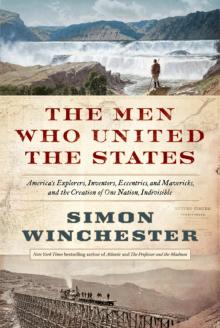 The Men Who United the States: America's Explorers
The Men Who United the States: America's Explorers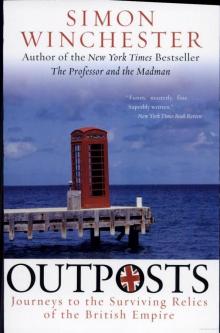 Outposts: Journeys to the Surviving Relics of the British Empire
Outposts: Journeys to the Surviving Relics of the British Empire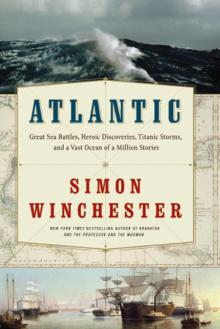 Atlantic: Great Sea Battles, Heroic Discoveries, Titanic Storms
Atlantic: Great Sea Battles, Heroic Discoveries, Titanic Storms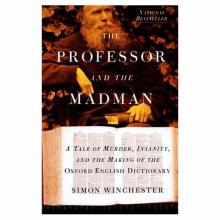 The Professor and the Madman: A Tale of Murder, Insanity
The Professor and the Madman: A Tale of Murder, Insanity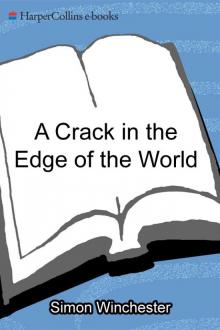 A Crack in the Edge of the World
A Crack in the Edge of the World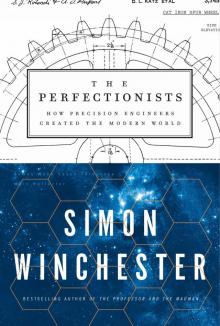 The Perfectionists: How Precision Engineers Created the Modern World
The Perfectionists: How Precision Engineers Created the Modern World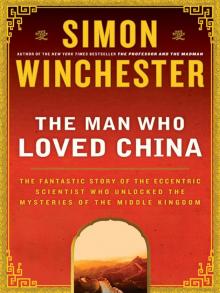 The Man Who Loved China: The Fantastic Story of the Eccentric Scientist
The Man Who Loved China: The Fantastic Story of the Eccentric Scientist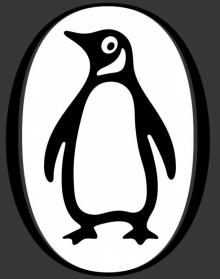 The River at the Center of the World: A Journey Up the Yangtze
The River at the Center of the World: A Journey Up the Yangtze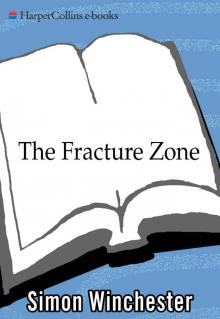 The Fracture Zone: My Return to the Balkans
The Fracture Zone: My Return to the Balkans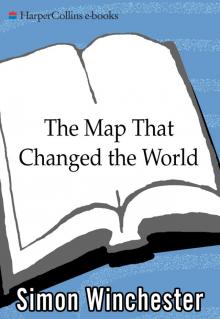 The Map That Changed the World
The Map That Changed the World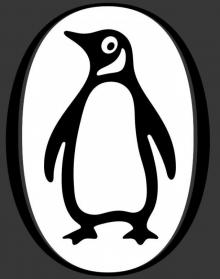 Krakatoa: The Day the World Exploded
Krakatoa: The Day the World Exploded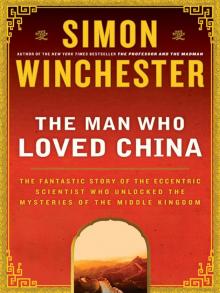 The Man Who Loved China
The Man Who Loved China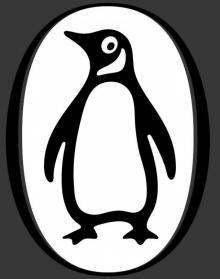 The River at the Centre of the World
The River at the Centre of the World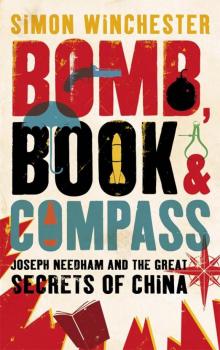 Bomb, Book and Compass
Bomb, Book and Compass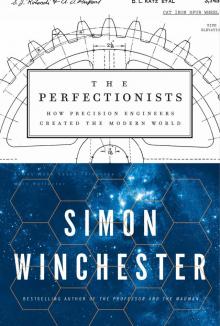 The Perfectionists
The Perfectionists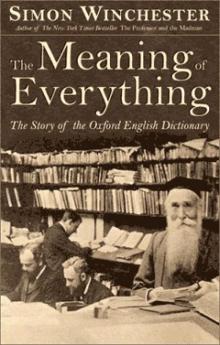 The Meaning of Everything
The Meaning of Everything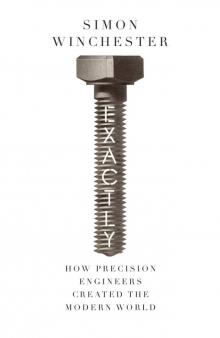 Exactly
Exactly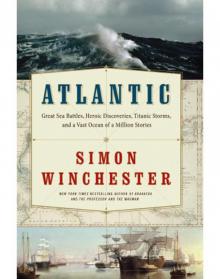 Atlantic
Atlantic Korea
Korea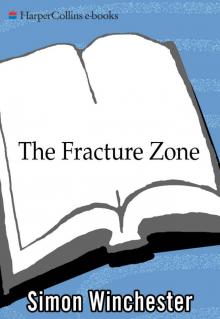 The Fracture Zone
The Fracture Zone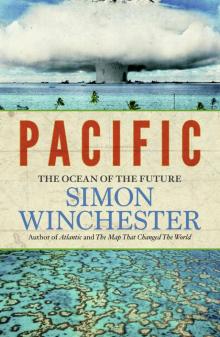 Pacific
Pacific Krakatoa
Krakatoa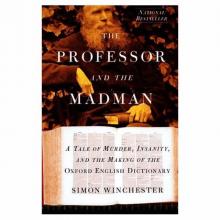 The Professor and the Madman
The Professor and the Madman Outposts
Outposts